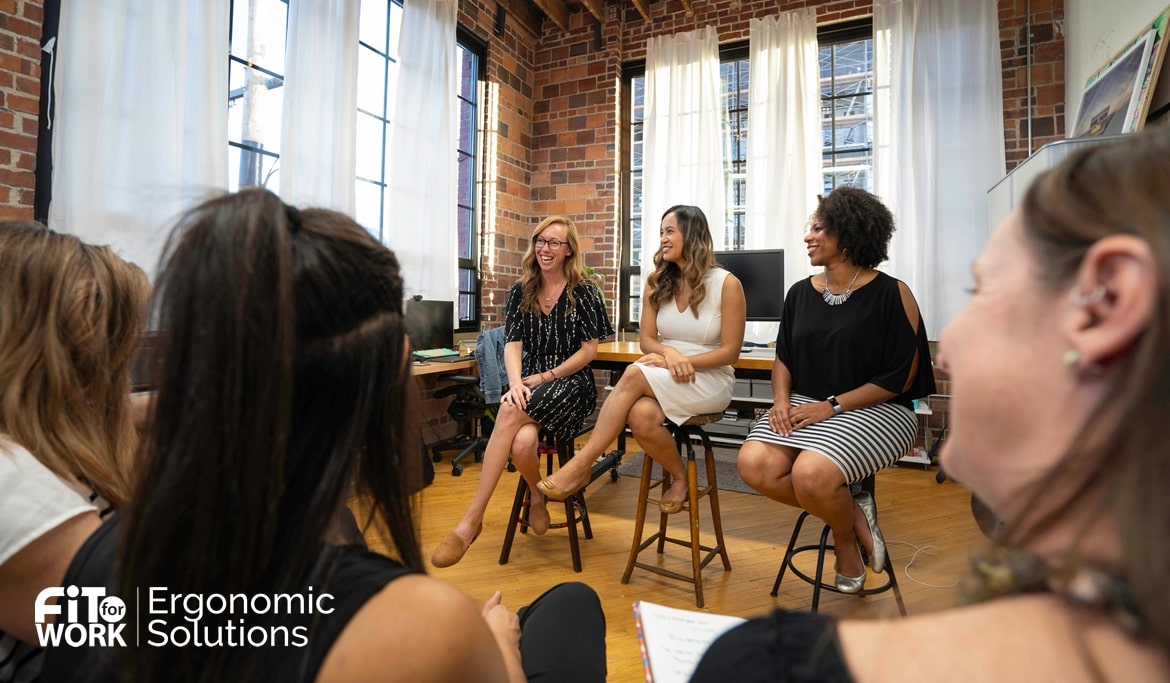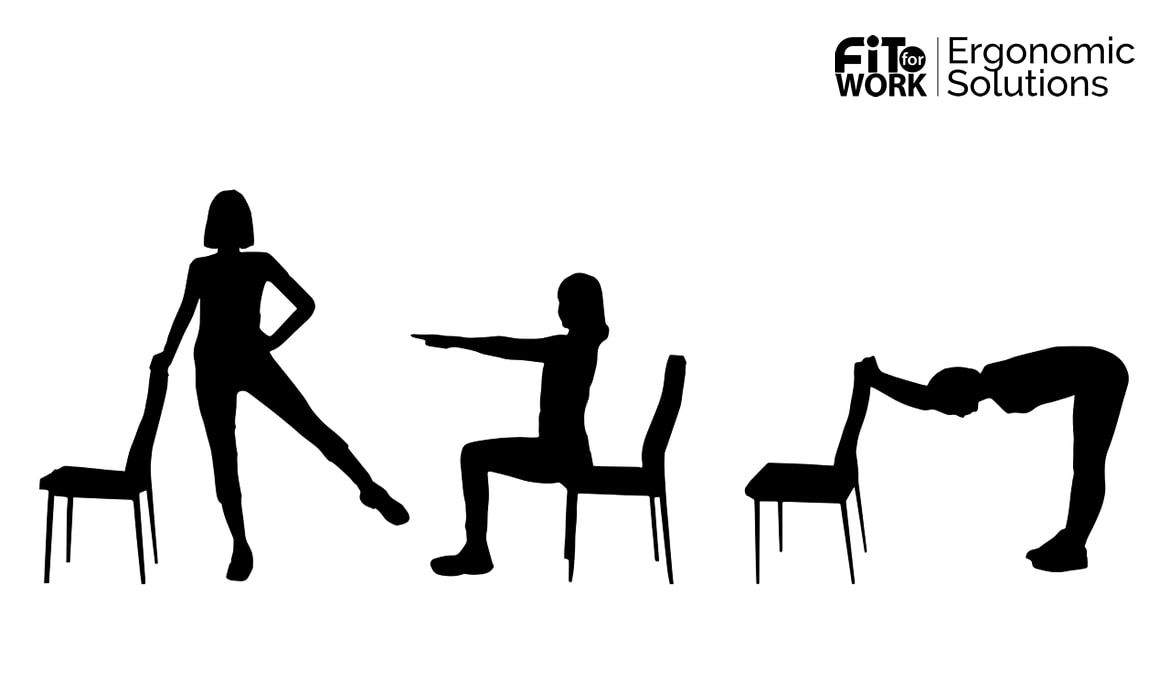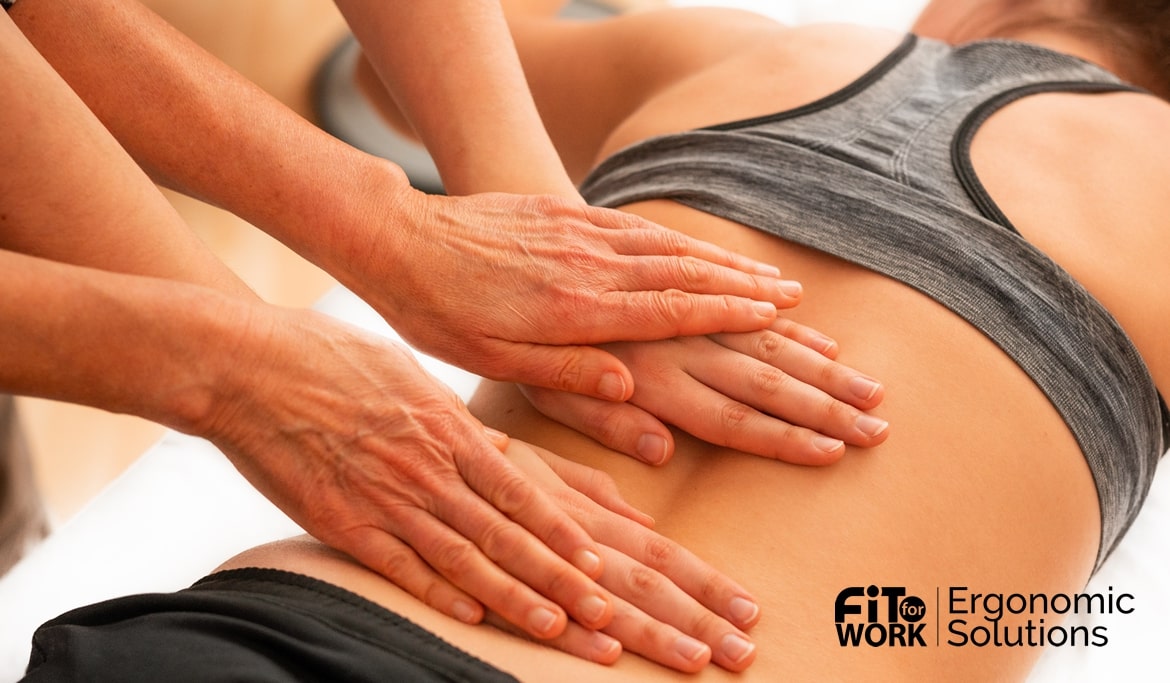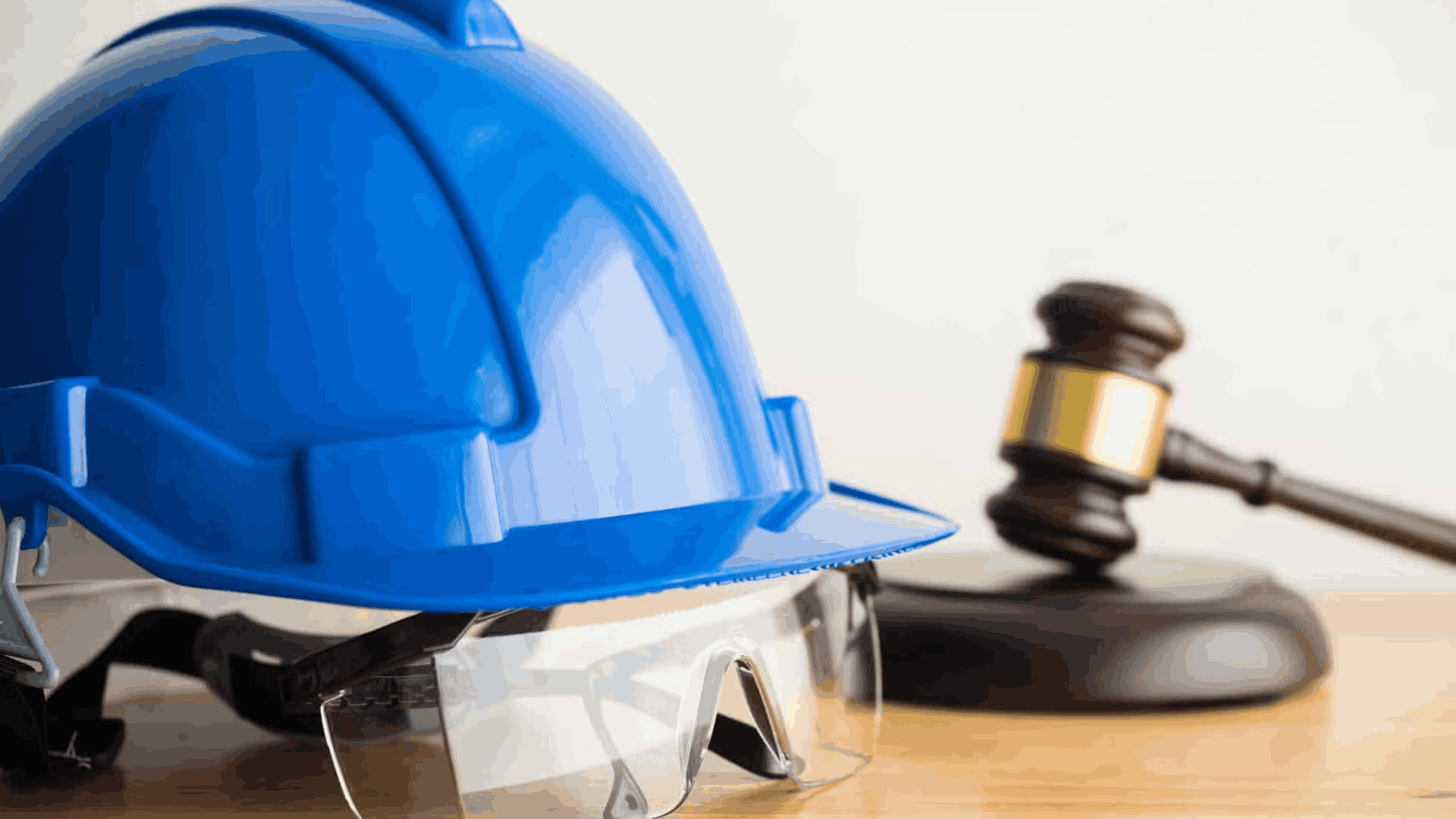Table of contents:
2. Back pain from standing at work
2.1 Employees who are at risk of back pain from standing at work
2.2 Back pain prevention tips for employees who stand for long hours
3. Lower back pain from sitting at a desk
3.1 Employees who are at risk of back pain from sitting at a desk
3.2 Back pain prevention tips for employees who sit for long hours
4. How to manage back pain from work
5. It’s time to take action to prevent back pain
Do you know what is one of the most common reasons why people seek emergency care? If your answer is back pain, you guessed it right. Many factors can cause a person to experience this problem including underlying health conditions, daily routines, sports and other physical activities. Your employees could also get back pain from work for various reasons.
According to a study published by the National Library of Medicine in the US, low back pain (LBP) is one of the top causes of work-related disability among people under the age of 45. The country spends about 200 billion dollars every year to manage this type of pain. Fortunately, most cases, especially back pain from desk job and lower back pain from standing at work are preventable.
While there are several causes of back pain, this article will focus only on work-related back pain. We’ll help you understand why some of your employees are prone to back pain. We will also share some of the practical ways to prevent them.
Back pain from standing at work
Standing at work for long hours can cause several health risks including lower back pain. Prolonged standing pushes the pelvis backward, adding more pressure on the soft tissues around the spine. This in turn tightens the muscles in the lower back resulting in painful joints and nerves.
Employees who are at risk of back pain from standing at work
Employees of certain types of jobs
While anyone could experience back pain from standing at work, certain types of jobs are more prone to this condition. In particular, industrial workers and employees in the retail, healthcare, tourism, and food service industries suffer from this pain as their work requires them to stand up for several hours.

When your employees stand up for long hours, proper posture is vital to keep their backs safe. Here are some important tips for them:
- Keep the back straight and no slouching. When they feel tired, they should avoid leaning on the wall in an awkward position or standing on one foot to relieve the pain on the other foot. Instead, advise them to take a short break. Correct posture and breaks help maintain good back health at work.
- Advise your employees to avoid hunching their shoulders or poking their chin while putting their heads forward. These bad postures could lead to back pain.
Employees and workers who constantly push, pull or lift heavy objects.
Your employees may also suffer from work back pain if they constantly push, pull or lift heavy objects. Incorrect posture when pushing, pulling or lifting puts extra stress on the bones, joints and muscles. As a result, they may suffer from back pain, neck pain and even shoulder pain. If they are not careful, they will be at risk of serious body pain.
Back pain prevention tips for employees who stand for long hours
1. Take breaks. Employees should not stay in the same position for hours. A 5-minute walking break for every 25 minutes of standing up can greatly help reduce lower and upper back pain at work. Walking breaks promote lumbar movements, helping the muscles to relax.

2. Encourage stretches and exercises that strengthen the muscles. Aside from a walking break, you could also encourage your employees to use their break time to perform stretches and exercises to avoid work back pain. A bridge stretch and back extension are examples of exercises that are good for the back muscles.
Here are the basic steps to perform these stretches:
Bridge Stretch – Stand up and reach your arms overhead, interlock your fingers and try to reach your arms away from your body as much as possible.
Back Extension – Stand with your feet shoulders width apart. Place your hands on the back of your hips. Slowly lean backward increasing the arch of your lower back until you feel a mild stretch in the abdominal muscles and slight pressure in the lower back.
3. Observe proper posture – There are correct and incorrect postures that employees need to be aware of to avoid lower back pain from work.
Standing for long hours – When standing up, the ideal position is to stand tall and straight while putting your shoulders backward, your stomach in, and your head level with your body. The knees should not be locked together, but instead, the knees and feet should be a bit apart. The balls of the feet should carry your weight.
Pushing heavy objects – Your employees could also avoid back pain at work if they follow the correct posture when pushing. They need to bend their knees, relax their stomach muscles and lean closer to the object. As a rule of thumb, the heavier the object is, the closer a person should lean toward it. It’s important not to rush but take small steps and use the body weight and legs to push the object forward.
Pulling heavy objects – To pull a heavy object, the person pulling should be in front of the object. It’s recommended to tighten the stomach muscles while slightly bending the knees when pulling. The right technique is to take small steps backward while pulling the object. Just like when pushing, a person should use their body weight and not their hands to pull.
Lifting heavy objects – A person lifting a heavy object can reduce their risk of work back pain if they do it the right way. When lifting, they need to keep their back straight and bend their knees (as opposed to bending over from the waist). They need to hold the object close to their body as they stand up and lift it.
4. Modify any repetitive or routine tasks. As an employer, you can also help by modifying any repetitive tasks your employees are assigned to do.
If your employees’ daily work involves doing a lot of physically demanding tasks such as lifting heavy objects, it helps if you can alternate the most physically demanding tasks with tasks that require less effort. This gives them time to rest and recover. Moreover, it also helps if you invest in ergonomic tools and equipment that will help lessen the effort they need to exert.
Lower back pain from sitting at a desk
How many hours on average do your employees spend sitting down at work? Is it 3 hours, 5 hours, or the entire shift? Are they aware of the proper sitting posture? Do they have an ergonomic workstation? If you often receive feedback about employees experiencing lower back pain, you need to ask yourself these questions as it can help you identify the reasons.
Employees who are at risk of back pain from sitting at a desk
Employees who do sedentary work and desk jobs
Ever received a complaint from an employee saying his back hurts from sitting at a desk?
Sitting down in itself does not cause back pain at work, otherwise, all employees would have this problem. Different factors contribute to the condition.
Prolonged sitting is more likely a risk factor for lower back pain (LBP). It also causes other health conditions such as heart disease and diabetes. Adults generally spend between 6 to 8 hours of their daily waking hours in a sitting position.
Excessive sitting is not healthy. Make sure that your employees are aware of it.

Other factors such as poorly designed workstations, incorrect sitting posture, lack of breaks and inability to do stretches and short exercises during breaks can also increase the risk of lower back pain from sitting at a desk.
Employees who are not aware of the ergonomic principles
What about those employees who spend less than 5 hours a day on their chairs? Are they safe from back pain?
The answer is no. They are also at risk of back pain at work if they are not careful of their sitting posture and if they do not have an ergonomic workstation. You could help them by providing educational resources and training on ergonomics.
There are ergonomic principles that you need to observe in setting up your workstation and your office in general. You need to observe the correct positioning of your monitor and other peripherals and use ergonomic furniture. A properly designed workstation will reduce the risk of back pain problems. This is where ergonomic assessment can be useful.
Back pain from sitting at a desk is not uncommon and it is preventable.
Back pain prevention tips for employees who sit for long hours
1. Switch the sitting position from time to time. One of the many ways how to prevent back pain from sitting at a desk is to change position from time to time. Switching positions as often as possible and taking short breaks to stretch or walk around can relieve the tension in the back muscles, preventing pain.

2. Create an ergonomic computer workstation for your employees.
Office desks that are too high or too low for a person using them, and chairs that do not offer adequate lumbar support could encourage incorrect posture which may lead to back pain from a desk job. You should follow the ergonomic principles when it comes to the furniture you use and the placement of the monitor, laptop, keyboard and mouse in each workstation.
We also recommend that you share these tips with your employees:
Chair – Place your feet firmly on the floor. Alter your chair height so that your knees are at 90 degrees. Sit with your back fully touching the backrest. If your chair has adjustable lumbar support, position it to meet the curve at the lower part of your back. Additionally, ensure that the backrest is locked in an upright position. The hips and knees should also stay parallel to the floor.
Desk – Once you have set up your chair appropriately, it’s time to take a look at your desk. When your desk is not at the correct height you may find yourself leaning forward or backward. This is likely to put added strain on your back muscles. Your desk height should allow you to work comfortably with your elbows close to your body at a 90-degree angle. Continue to keep your back in contact with the backrest while the chair should be pulled closer to the desk.
3. Short breaks. When a person starts to move unconsciously in their chair, it’s their body’s way of telling them they have been static for too long. They should take this as a sign that they need to move to avoid back pain at work. During their break, they can perform stretching exercises or walk around your office or home.
Keep in mind that a natural reaction to pain is for the muscles to tighten further. Movement is essential to help the muscles relax. Ensure that your employees are moving every 1 hour.

4. Observe proper posture when sitting down. We recommend educating your employees on how to sit at work to avoid back pain. They need to avoid crossing their legs, but instead, they should let their feet touch the floor. If this is not possible, they could use a footrest. A good way to sit is to keep the shoulders relaxed and not pulled backward or rounded to the front. The elbows should be closer to the body and bent at a 90-degree angle.
When sitting down, it’s good to keep in mind to lean your back against the chair for full support.
How to manage back pain from work
Back pain can range from mild muscle aches to more severe burning or stabbing pain. Mild pain is manageable with home remedies such as putting an ice pack on the affected area. However, when the pain becomes severe and it’s already affecting the movements and causes a person to be absent from work, this is something that needs special attention.
For your employees who suffer from back pain from sitting at a desk or from standing up at work for hours, here are some tips to help them alleviate or relieve lower back pain and upper back pain.
- Rest
- Apply ice or a heating pad to the affected area
- If the pain becomes unbearable, try using over-the-counter medication
- Consider massage

- Consider contacting a healthcare provider if the pain becomes too severe and does not improve after three days.
It’s time to take action to prevent back pain
Back pain is a serious condition that needs your attention. When you neglect it, you may see more and more of your employees suffering from work-related back pain. Ask yourself, do I let my employees take the necessary breaks? Did I invest in ergonomic furniture? Did I educate them about ergonomics for back pain and ergonomics in general? Your answer to these questions could help you identify your next moves.
Different factors can cause back pain from sitting at a desk or from standing up at work. These factors include incorrect posture and non-ergonomic workstation set-up and a lack of understanding of ergonomics. Our ErgoEval tool can provide your employees with educational resources, ergonomic assessment and wellness activities that could help prevent back pain.



